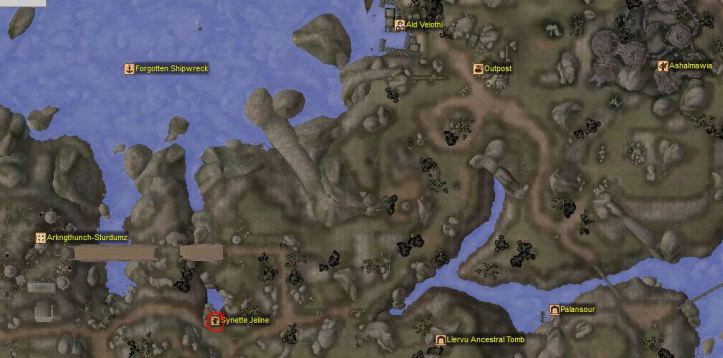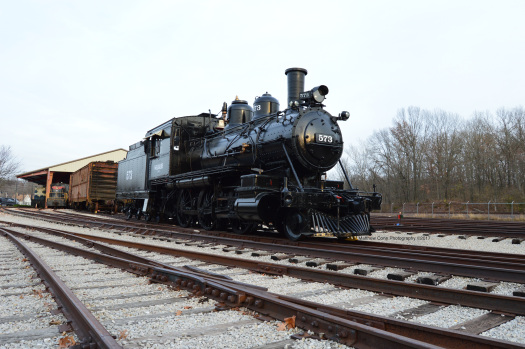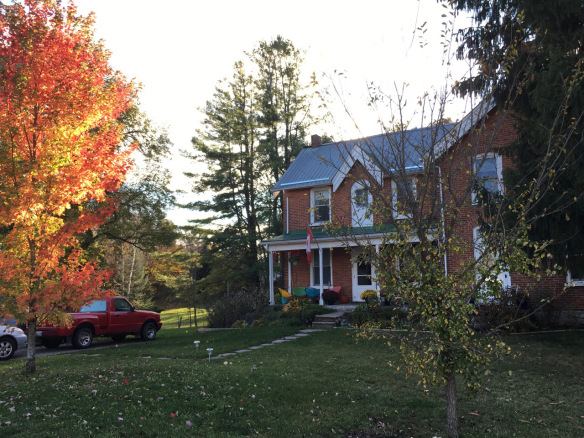
Here at the Manse, we are so fortunate to be surrounded by a variety of trees, both on our own and our immediate neighbours’ properties.
I think that I shall never see
A poem lovely as a tree…
You all know that one, I’m sure – or at least some version of the first two lines. It came into my head this evening as I was downloading photos of the trees here at the Manse. The autumn foliage in the Queensborough area has in general been less than spectacular this year – probably due to the cool, wet summer and then the sudden burst of extreme heat just around the time the leaves had started to turn – but in the closing days of the foliage season some trees are looking pretty great. And one of these, I am happy to report, is the maple tree that Raymond and I proudly planted a few months after we bought the Manse 5½ years ago.
It’s funny to go back and look at the photos of that planting day in November 2012, to see how scrawny our maple was then – even though we’d taken the advice of my brother, John, and bought the biggest and fastest-growing one we could afford because, you know, none of us is getting any younger and it would be nice to see it turn into a tree of some size in our lifetimes. Here’s the view of our tree from the front porch of the Manse that grey late-fall day:
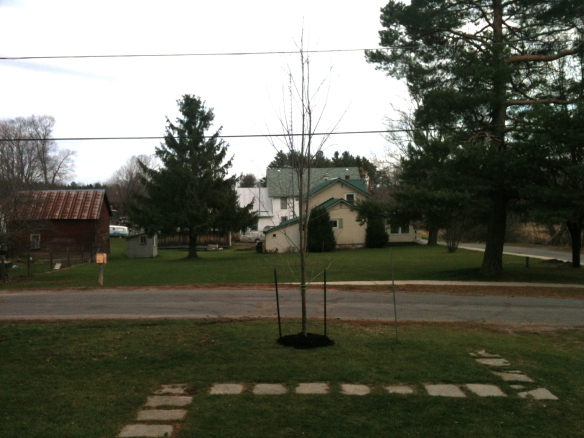
Day 1 of our newly planted maple tree. It didn’t look like much then!
And here’s the same view (a little zoomed in on the tree) from this bright fall afternoon:
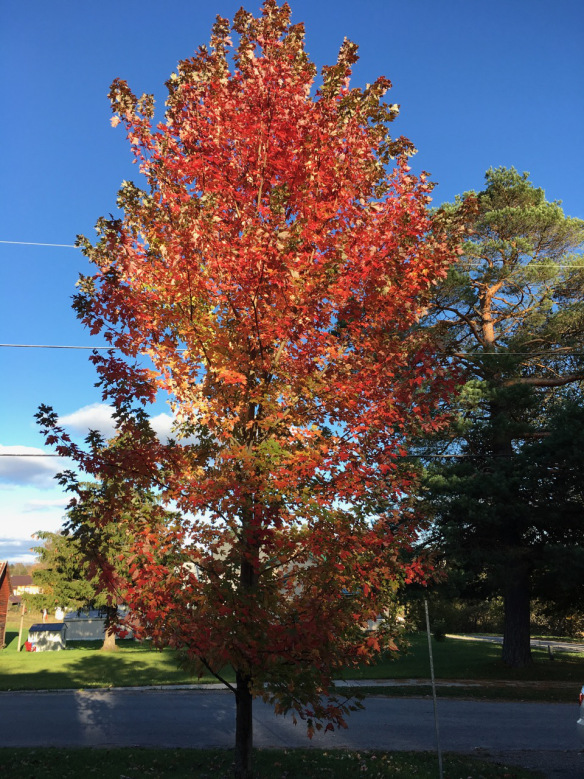
Our beautiful maple tree (with the equally beautiful Tree of Life behind it to the right, across the street).
As you can see, our maple tree has grown and flourished. And the fact that it’s a variety called Autumn Blaze means that it looks spectacular come September and October – more so, I think, this year than in any of its autumns past.
So yes, poems may be lovely – but can they ever be as beautiful as a tree? That’s the question American poet Joyce Kilmer (“Joyce” in his case being a male name) asked (and answered in the negative) in his poem published in 1913 and memorized by countless schoolchildren since.
In reading here about the history of the poem – which is simply called Trees – I learned that Kilmer was inspired by the view from the window of his writing room in his family’s home in rural New Jersey. His son, Kenton, recalled many years later that their “well-wooded lawn” contained “trees of many kinds, from mature trees to thin saplings: oaks, maples, black and white birches, and I do not know what else.” Kenton Kilmer also said: “Dad never meant his poem to apply to one particular tree, or to the trees of any special region. Just any trees or all trees that might be rained on or snowed on, and that would be suitable nesting places for robins. I guess they’d have to have upward-reaching branches, too, for the line about ‘lifting leafy arms to pray.’ Rule out weeping willows.”
That description of the Kilmers’ “well-wooded lawn” reminded me of what Raymond and I are fortunate enough to enjoy here at the Manse. As you can see from the photo at the top of this post, which I also took this afternoon, not only do we have our maple but also the elm tree that we planted post-Manse purchase (it’s in the right foreground of the photo; it’s lost almost all its leaves now, but has also grown and flourished beautifully in the five years since it was planted), as well as huge yet-to-be-identified (by me, at least) evergreens at the rear of the property (actually in our neighbour-to-the-west Julie’s yard, but we can enjoy their beauty too) and a beautiful birch (behind Raymond’s red truck) and quite a few colourful deciduous trees on the property of our neighbours to the south, Brian and Sylvia.
And on the right of my photo you can just catch a glimpse of the branches of the two huge evergreen trees that fill out the northeastern section of the Manse property, and that tower over the house. Here’s a summertime photo I took of them when I wrote a few years ago about my (probably needless) worry about their proximity to the Manse:
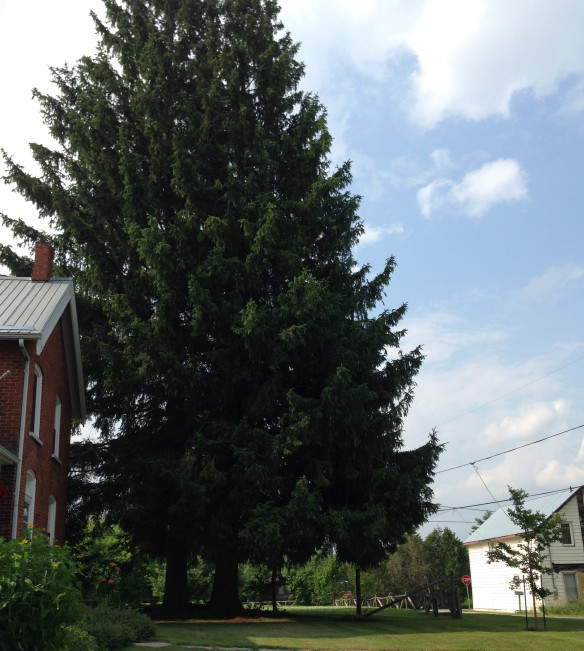
The two huge spruce trees – Norway spruce, I believe – that tower over the northeast corner of the Manse.
These two trees – which I once identified as red spruce, but which I believe are actually Norway spruce – are making their presence felt in a very different way than our Autumn Blaze maple this season. Like every other coniferous tree in our area this year, they have produced cones like it was nobody’s business. (Rather like the apple trees – another kind we’re lucky enough to have on our property – were drooping with their bumper apple crop last year.) The spruce trees are absolutely loaded with cones, as you can see in this photo:
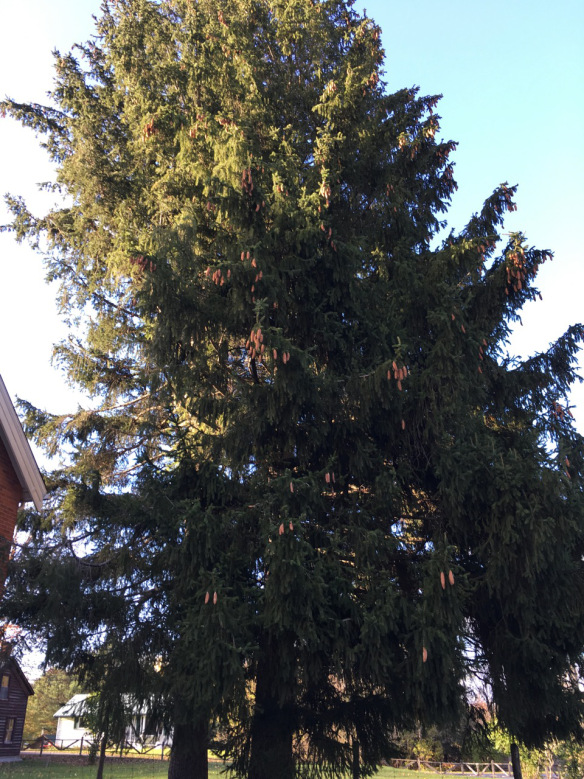
And better still in this closeup:
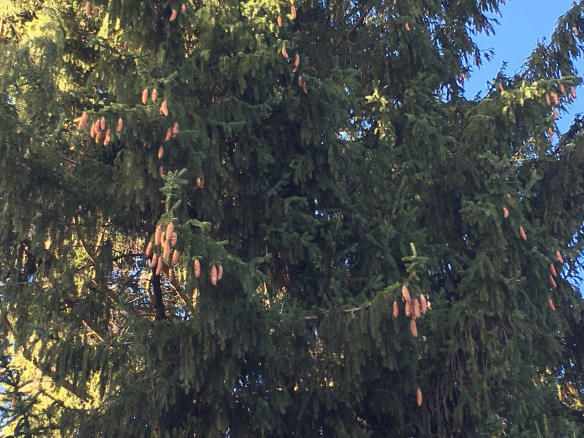
And you can probably figure out what this means for us down below:
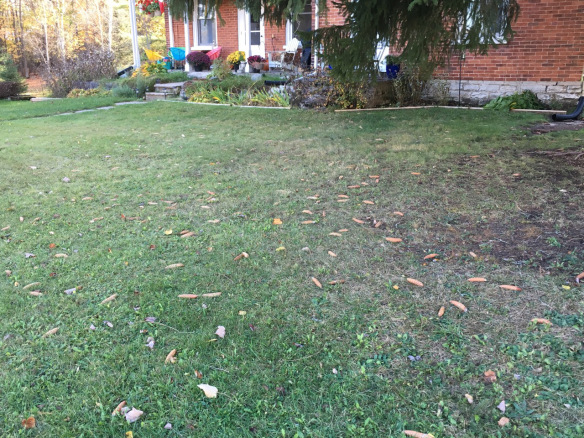
Yes indeed: a lot of cone-picking. This is how our lawn looks after two clean sweeps of the cones have already been made this season. And there are still hundreds left to fall!
But despite our trees sometimes being work – as in picking up many lawn bags’ worth of cones, not to mention fallen leaves – I have to say I am always appreciative of their beauty, and of how much they contribute to our lives and landscape. Like Joyce Kilmer, I love living in the midst of a “well-wooded lawn.” Would I swap poems for trees? Let’s just say I’m happy I don’t have to. Here’s Joyce Kilmer’s sweet little poem in full.
TreesI think that I shall never see
A poem lovely as a tree.
A tree whose hungry mouth is prest
Against the earth’s sweet flowing breast;
A tree that looks at God all day,
And lifts her leafy arms to pray;
A tree that may in Summer wear
A nest of robins in her hair;
Upon whose bosom snow has lain;
Who intimately lives with rain.
Poems are made by fools like me,
But only God can make a tree.

